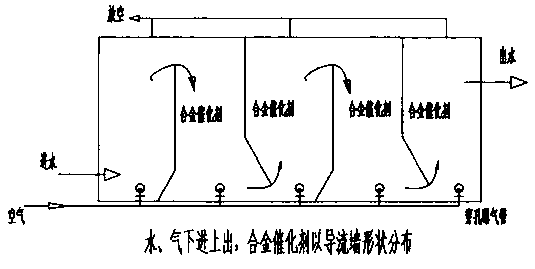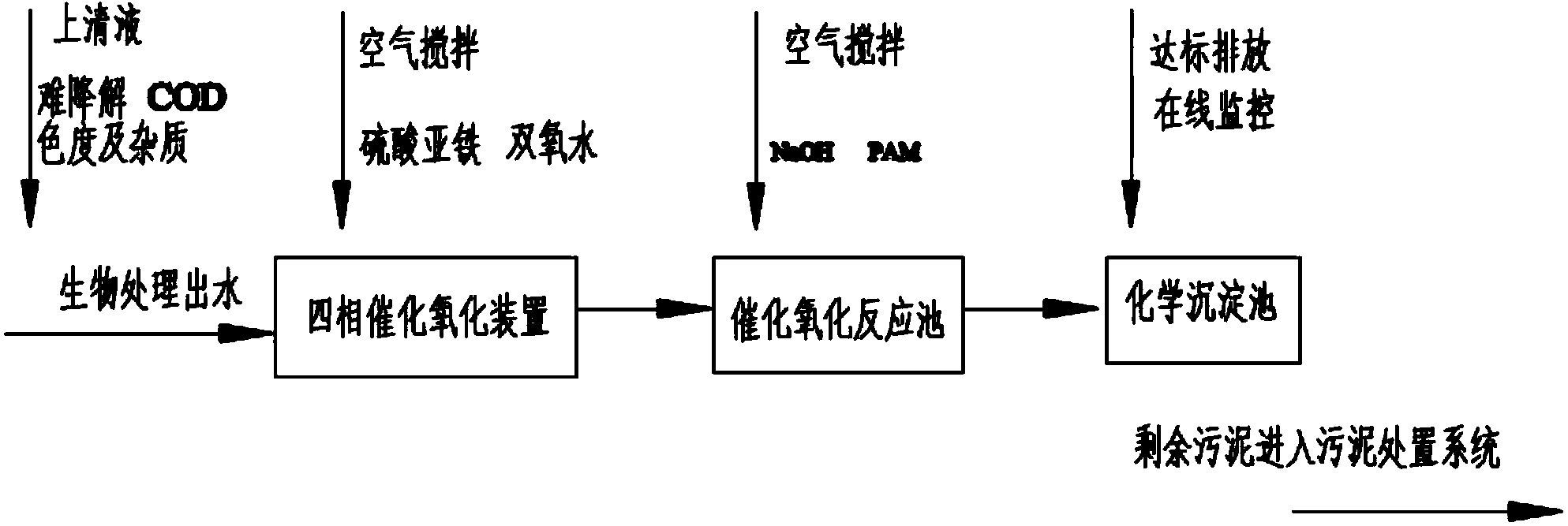Chemical depth treatment method applied to antibiotic wastewater treatment
A technology for antibiotic wastewater and advanced treatment, applied in chemical instruments and methods, water/sewage multi-stage treatment, water/sludge/sewage treatment, etc.
- Summary
- Abstract
- Description
- Claims
- Application Information
AI Technical Summary
Problems solved by technology
Method used
Image
Examples
Embodiment Construction
[0024] In order to describe the technical content, structural features, achieved goals and effects of the present invention in detail, the following will be described in detail in conjunction with the embodiments and accompanying drawings.
[0025] see Figure 1~Figure 4 A chemical advanced treatment method applied to the treatment of antibiotic wastewater is applied to an antibiotic wastewater advanced treatment system, the system includes a four-phase catalytic oxidation device, a catalytic oxidation reaction tank, and a chemical sedimentation tank. The treatment method includes the following steps:
[0026] (1) The biological treatment effluent enters the four-phase catalytic oxidation device, and the catalyst ferrous sulfate and the oxidant hydrogen peroxide are added to generate hydroxyl radicals·OH, and the air is blown and aerated for 1 hour. The four-phase catalytic oxidation device contains an alloy catalyst;
[0027] (2) The reaction effluent of the catalytic oxidat...
PUM
 Login to View More
Login to View More Abstract
Description
Claims
Application Information
 Login to View More
Login to View More - R&D
- Intellectual Property
- Life Sciences
- Materials
- Tech Scout
- Unparalleled Data Quality
- Higher Quality Content
- 60% Fewer Hallucinations
Browse by: Latest US Patents, China's latest patents, Technical Efficacy Thesaurus, Application Domain, Technology Topic, Popular Technical Reports.
© 2025 PatSnap. All rights reserved.Legal|Privacy policy|Modern Slavery Act Transparency Statement|Sitemap|About US| Contact US: help@patsnap.com



